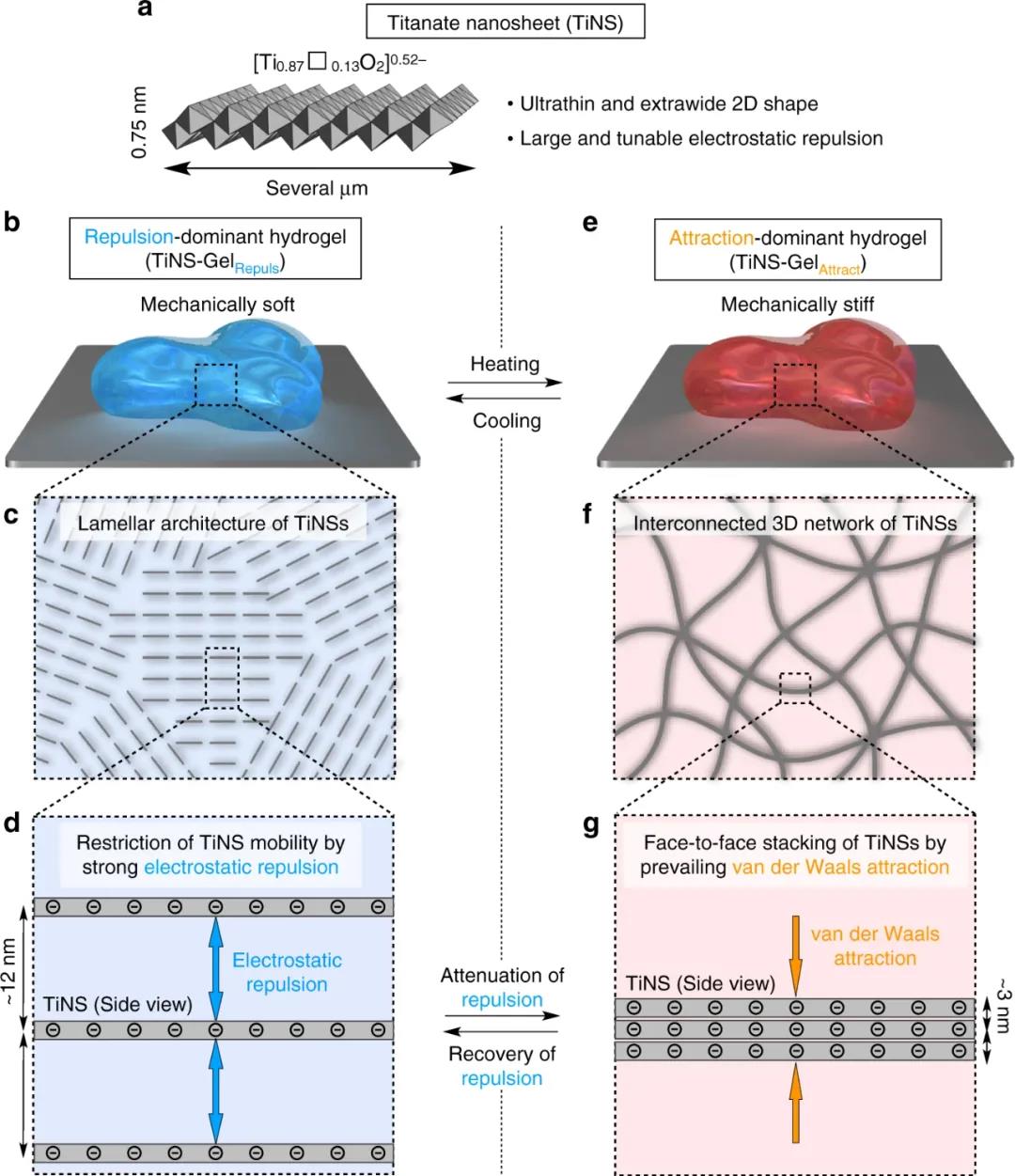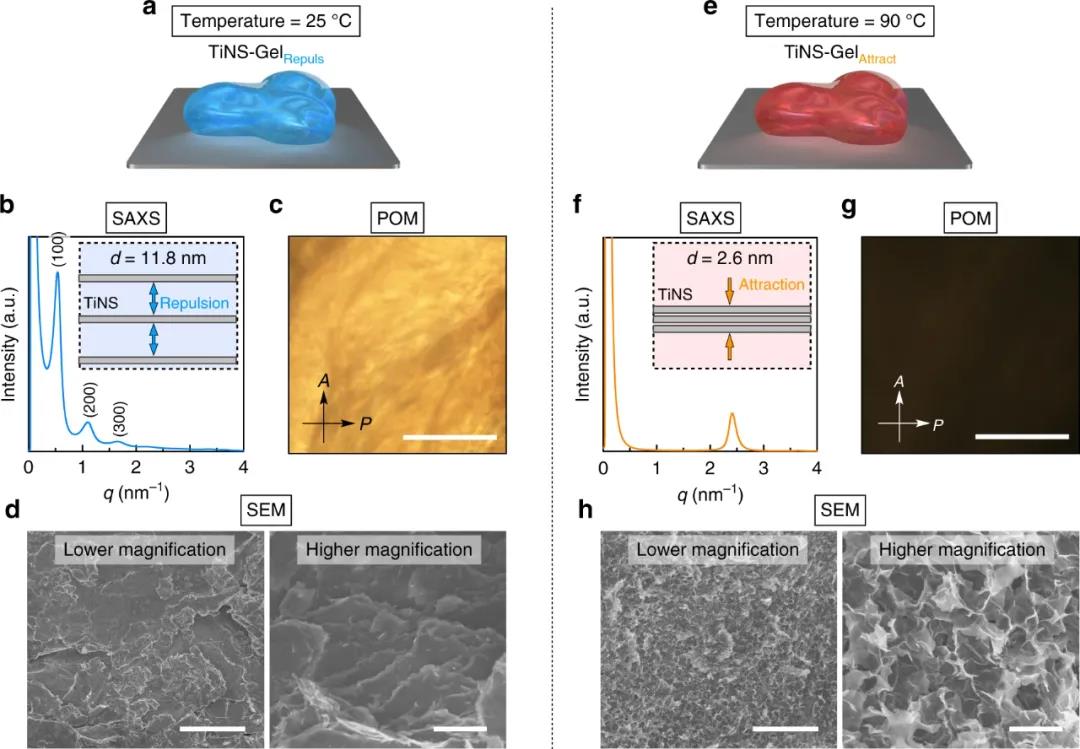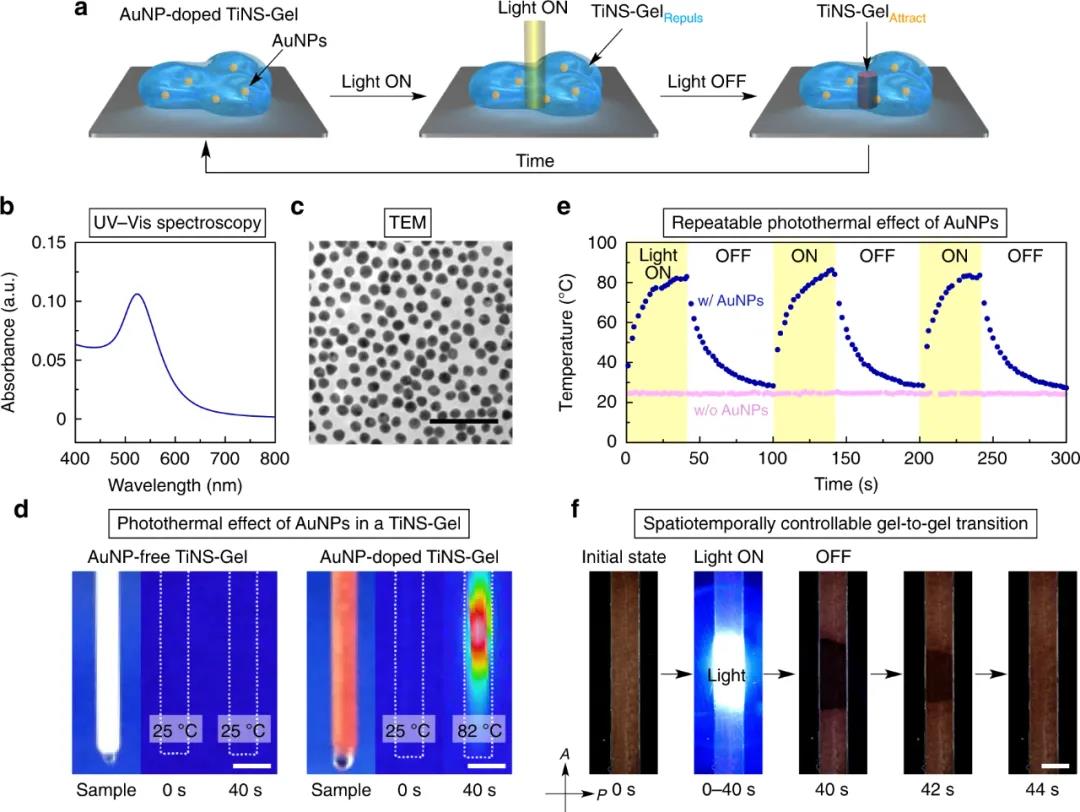
hotline:
17715390137
Tel/Wechat:
18101240246 (Technology)
0512-68565571
Email:mxenes@163.com (Sales Engineer)bkxc.bonnie@gmail.com
Scan the code to follow or search the official account on WeChat:
2D Materials Fronrier After paying attention,
click on the lower right corner to contact us,
Enter enterprise WeChat.
Professional Services Online

Although people have developed various bionic soft materials with structural levels and stimulus responsiveness based on organic materials, the manufacture of bionic soft materials composed entirely of inorganic materials is an extremely attractive and huge challenge. The properties of materials are usually different from those of biological organisms.
Recently, Yasuhiro Ishida, Takuzo Aida, and Koki Sano of the Riken Emergency Material Science Center of Japan, based on the Derjaguin-Landau-Verwey-Overbeek (DLVO) theory, adopted a fine-tuning of the strength of the competing attraction and repulsive force to contain a single charged nanosheet. The water system can reversibly form two types of hydrogels. A stimulus-responsive hydrogel was successfully developed. It consists of titanate (TiNSs; 14 wt%) and water (86 wt%) anion nanometers. The composition of the sheet, depending on the temperature, can reversibly adopt one of two hydrogel states: repelling the dominant state or attracting the dominant state.

Article points
1) At room temperature, the nanosheets electrostatically repel each other in water, and self-assemble into a long-period sheet-like structure with mutually restricted mobility to form a physical hydrogel. When heated to above 55°C, the electrostatic repulsion is overcome by the competing Van der Waals attraction, and the nano-film rearranges into another interconnected 3D network of hydrogels. Therefore, in the process of driving the gel-to-gel transition by adjusting the electrostatic repulsion between TiNSs, the topological structure of the internal structure of the hydrogel has undergone abrupt changes.

2) Due to the sudden topological reorganization of the internal structure of the material, the transition from gel to gel is accompanied by a 23-fold change in the mechanical elasticity of the hydrogel. In addition, by doping a small amount of gold nanoparticles that act as a light-to-heat converter, the hydrogel can respond to light stimulation, thereby realizing the transition from gel to gel in a time- and space-controllable manner.

references:
Sano, K., Igarashi, N., Ebina, Y. et al. A mechanically adaptive hydrogel with a reconfigurable network consisting entirely of inorganic nanosheets and water. Nat Commun 11, 6026 (2020).
DOI: 10.1038/s41467-020-19905-4
https://doi.org/10.1038/s41467-020-19905-4
Source of information: Fantastic Object Theory
This information is from the Internet for academic exchanges. If there is any infringement, please contact us and delete it immediately

| Reminder: Beijing Beike New Material Technology Co., Ltd. supplies products only for scientific research, not for humans |
| All rights reserved © 2019 beijing beike new material Technology Co., Ltd 京ICP备16054715-2号 |